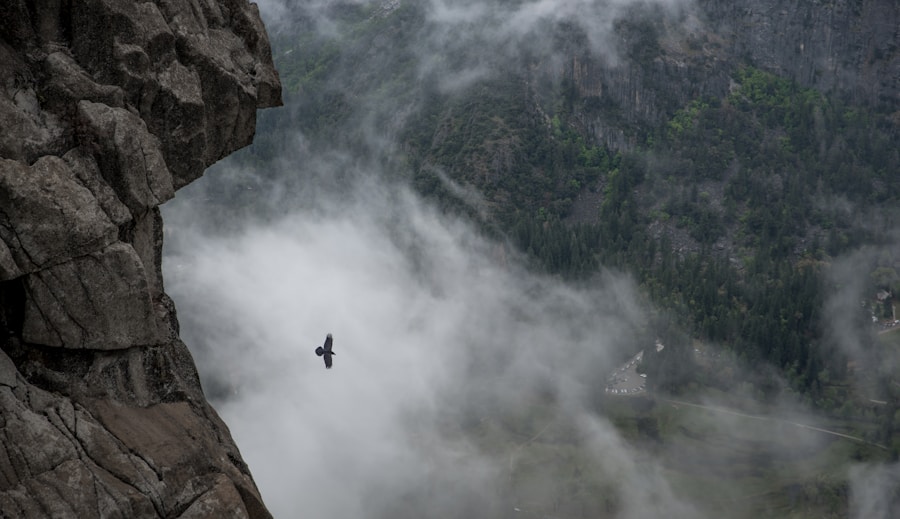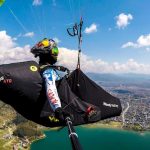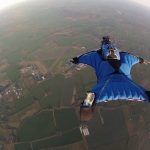Soaring Through the Skies: The Thrill of Wingsuit Flying
Description
Wingsuit flying, a breathtaking aerial sport that combines the thrill of skydiving with the grace of gliding, has a rich history that dates back to the early 20th century. The concept of using a suit to enhance human flight can be traced back to the pioneering work of early aviators and inventors. One of the first recorded instances of a wingsuit-like apparatus was in 1912 when French inventor Franz Reichelt attempted to fly from the Eiffel Tower using a parachute suit.
Although his endeavor ended tragically, it laid the groundwork for future innovations in human flight. The modern wingsuit, however, began to take shape in the late 1990s, thanks to the efforts of a few dedicated enthusiasts. In 1998, the first commercially available wingsuit was introduced by the company BirdMan, founded by Patrick de Gayardon, who is often credited as one of the pioneers of wingsuit flying.
De Gayardon’s designs featured fabric wings that extended between the arms and legs, allowing for controlled gliding and maneuverability. This innovation sparked a surge of interest in the sport, leading to the development of more advanced wingsuits with improved aerodynamics and safety features. As wingsuit flying gained popularity, it transitioned from a niche activity among skydivers to a mainstream extreme sport, attracting thrill-seekers from around the globe.
Key Takeaways
- Wingsuit flying originated in the 1930s with the development of the first wingsuit by a French inventor.
- Wingsuit flying involves using a specialized jumpsuit to increase the surface area of the human body, allowing for increased lift and horizontal travel.
- The risks of wingsuit flying include collisions with obstacles, parachute malfunctions, and the potential for human error.
- Proper training and skill in skydiving and BASE jumping are essential for those looking to pursue wingsuit flying.
- Wingsuit flying provides an unparalleled adrenaline rush and a sense of freedom, making it a popular extreme sport for thrill-seekers.
The Mechanics of Wingsuit Flying
Wingsuit flying operates on principles of aerodynamics that allow a human body to glide through the air with remarkable efficiency. The wingsuit itself is designed with fabric wings that stretch between the arms and legs, creating a larger surface area that generates lift.
However, unlike a standard parachute jump where the primary goal is to descend rapidly, wingsuit flying emphasizes horizontal movement and gliding. The mechanics of flight in a wingsuit are governed by several factors, including speed, angle of descent, and body position. A wingsuit pilot must maintain an optimal angle of attack to maximize lift while minimizing drag.
This requires precise control over their body position; pilots often adopt a horizontal posture with arms extended and legs slightly apart to create an efficient aerodynamic profile. The ability to manipulate these variables allows experienced pilots to cover significant distances horizontally while descending at a controlled rate. For instance, seasoned wingsuit flyers can achieve glide ratios of up to 3:1, meaning they can travel three feet forward for every foot they descend.
The Risks and Safety Measures of Wingsuit Flying

While wingsuit flying offers exhilarating experiences, it is not without its inherent risks. The combination of high speeds, complex maneuvers, and proximity to terrain makes it one of the most dangerous extreme sports. Fatalities and serious injuries have occurred due to various factors such as equipment failure, misjudgment during flight, or collisions with obstacles like trees or cliffs.
According to statistics from various wingsuit organizations, the fatality rate for wingsuit flying is significantly higher than that of traditional skydiving, underscoring the need for rigorous safety measures. To mitigate these risks, wingsuit pilots must adhere to strict safety protocols and utilize advanced equipment. One critical safety measure is the use of an automatic activation device (AAD), which deploys the parachute at a predetermined altitude if the pilot fails to do so manually.
Additionally, many pilots undergo thorough pre-flight checks to ensure their gear is functioning correctly. Training programs emphasize situational awareness and decision-making skills, teaching pilots how to assess their environment and make quick judgments during flight. Furthermore, many experienced wingsuit flyers advocate for flying in groups or with a buddy system to enhance safety through mutual support and observation.
The Training and Skill Required for Wingsuit Flying
| Training and Skill Required for Wingsuit Flying | |
|---|---|
| Physical Fitness | Excellent physical fitness is required to withstand the physical demands of wingsuit flying. |
| Skydiving Experience | Extensive experience in skydiving is necessary before attempting wingsuit flying. |
| Wingsuit Training | Specialized training in wingsuit flying techniques and safety procedures is essential. |
| Knowledge of Aerodynamics | Understanding of aerodynamics and how wingsuits function is important for safe flying. |
| Risk Management | Ability to assess and manage risks associated with wingsuit flying is crucial. |
Becoming a proficient wingsuit pilot requires extensive training and a solid foundation in skydiving techniques. Most aspiring wingsuit flyers begin their journey by completing a skydiving certification course, which typically involves several jumps from an aircraft while using a standard parachute. This initial training helps develop essential skills such as freefall control, body positioning, and parachute deployment—all crucial elements for successful wingsuit flying.
Once a skydiver has achieved a certain number of jumps (usually around 100), they can transition into wingsuit training. This phase often includes specialized courses that focus on wingsuit handling and flight dynamics. Trainees learn how to manage their body position effectively during freefall and practice various maneuvers such as turns and dives.
Many training programs also incorporate simulation exercises that allow pilots to experience different flight scenarios in a controlled environment before attempting them in real-world conditions. The combination of theoretical knowledge and practical experience is vital for developing the skills necessary for safe and enjoyable wingsuit flying.
The Thrill and Adrenaline Rush of Wingsuit Flying
The allure of wingsuit flying lies not only in its breathtaking visuals but also in the unparalleled adrenaline rush it provides. As pilots leap from heights that can exceed 10,000 feet, they experience an exhilarating sense of freedom akin to soaring like a bird. The sensation of gliding through the air at speeds that can reach over 100 miles per hour creates an intoxicating mix of excitement and fear that many thrill-seekers crave.
The unique perspective offered by wingsuit flying adds to its appeal; pilots often navigate stunning landscapes, from rugged mountain ranges to vast canyons, all while experiencing the rush of wind against their bodies. This immersive experience fosters a deep connection with nature and an appreciation for the beauty of the world from above. Many pilots describe their flights as transcendent moments where time seems to stand still, allowing them to fully embrace the thrill of flight while surrounded by breathtaking scenery.
The Future of Wingsuit Flying and its Popularity

As technology continues to advance, the future of wingsuit flying looks promising with innovations that enhance both performance and safety. Manufacturers are constantly developing new materials and designs that improve aerodynamics and reduce weight, allowing pilots to achieve greater distances and more complex maneuvers. Additionally, advancements in wearable technology are paving the way for enhanced tracking systems that provide real-time data on speed, altitude, and trajectory during flights.
The growing popularity of wingsuit flying is also evident in its increasing presence in media and entertainment. High-profile events such as wingsuit competitions and record-breaking jumps are frequently showcased on social media platforms and television programs, inspiring new generations of adventurers to take up the sport. Furthermore, collaborations between wingsuit pilots and filmmakers have resulted in stunning visual narratives that capture the essence of flight in ways previously unimaginable.
As more individuals become captivated by the thrill of wingsuit flying, it is likely that we will see an expansion in training programs and community support networks dedicated to this exhilarating sport. With an emphasis on safety and skill development, aspiring pilots will have access to resources that enable them to pursue their passion responsibly while enjoying one of humanity’s most extraordinary feats—gliding through the skies like never before.
FAQs
What is wingsuit flying?
Wingsuit flying is a skydiving discipline where participants wear a special jumpsuit that adds surface area to the body, enabling them to glide through the air.
How does a wingsuit work?
A wingsuit works by creating additional surface area with fabric between the arms and body, as well as between the legs. This allows the wearer to generate lift and glide through the air.
What are the risks of wingsuit flying?
Wingsuit flying carries inherent risks, including the potential for collisions with obstacles, difficulty controlling flight in turbulent air, and the need for precise parachute deployment.
What training is required for wingsuit flying?
To participate in wingsuit flying, individuals must first become experienced skydivers and complete specialized wingsuit training with a certified instructor.
What are some popular wingsuit flying locations?
Popular wingsuit flying locations include the Swiss Alps, the mountains of Norway, and various cliffs and peaks around the world that offer suitable terrain for the sport.





